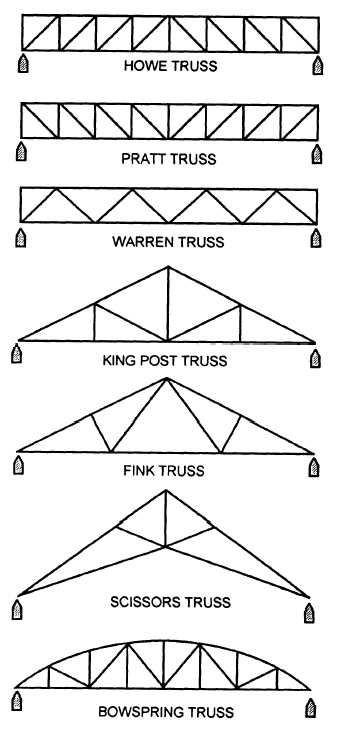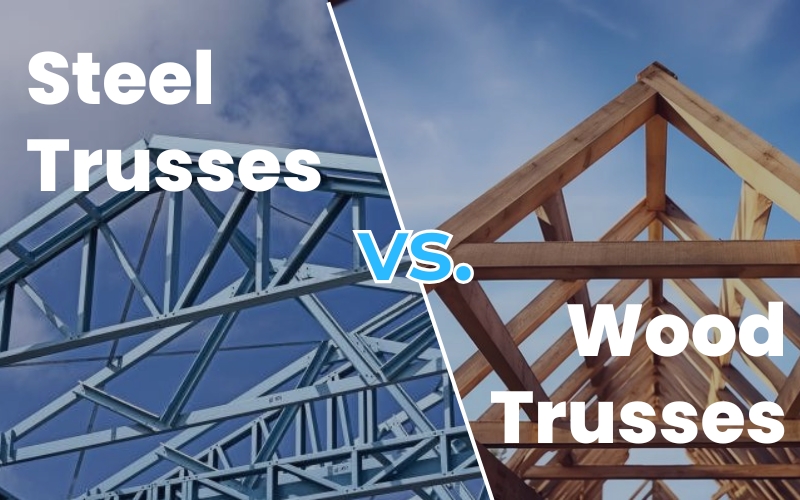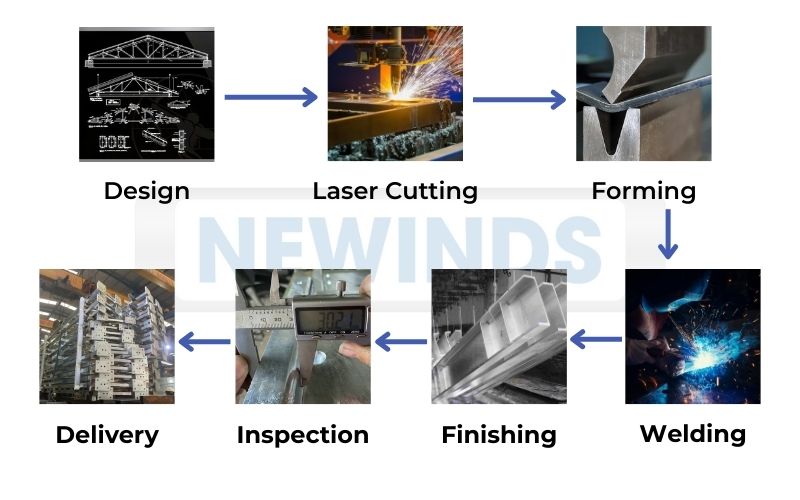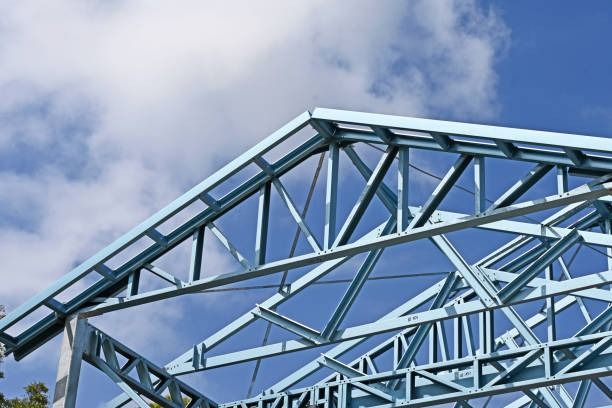If you’re deciding between a steel roof truss and a wood truss, this article will provide a detailed comparison of each option to help you choose the most suitable construction solution for your project.
WHAT ARE STEEL ROOF TRUSSES?
A steel roof truss is a structural steel framework used to support the roof of a building. Structurally, individual steel members are connected by welding, bolting, or riveting to form triangular shapes or other geometries, depending on the specific truss type.
The triangular design ensures even load distribution, optimizes load-bearing capacity, prevents sagging, and enhances overall structural safety. On average, a steel truss consists of the following main components:
- Top Chord
- Bottom Chord
- Web Members
- Connections
COMMON TYPES OF TRUSSES
There are various types of trusses available in the market. Depending on the function of the project, investors can choose the most suitable design:
- The Pratt Truss
Features diagonals that slope toward the center, commonly used in warehouses and factories. - The Warren Truss
Consists of a series of equilateral triangles, allowing even load distribution. Suitable for long-span structures. - The Howe Truss
The reverse of the Pratt Truss, with diagonals sloping outward. Often used in large, heavy-load structures. - The Fink Truss
Commonly used in residential buildings with sloped roofs to optimize structure weight. - The Scissor Truss
Features sloped components intersecting like a pair of scissors. This design creates a higher ceiling, ideal for vaulted spaces like churches or auditoriums.
COMPARISON: STEEL ROOF TRUSSES VS. WOOD TRUSSES
| Criteria | Steel Trusses | Wood Trusses |
| Durability & Lifespan | Resistant to termites, warping, and fire; lifespan over 50 years. | Prone to termites, moisture, and warping; lifespan around 15–30 years. |
| Structural Stability | Manufactured precisely via structural steel fabrication, ensuring uniform strength. | Depends on natural wood quality; more susceptible to deformation. |
| Aesthetics & Flexibility | Easily shaped for modern and complex architectural designs. | Limited design flexibility. |
| Initial Investment Cost | Higher, due to raw materials and production process. | Lower, as wood is more common and easier to work with. |
| Long-term Maintenance Cost | Minimal maintenance, no need for pest or frequent replacements. | Requires regular treatment and replacement if damaged. |
| Environmental Impact | Recyclable, especially when using reclaimed steel. | Requires tree harvesting; impacts natural resources. |
| Load-bearing Capacity | Handles large loads; ideal for long-span, heavy roof structures. | More suitable for small-scale, short-span buildings. |
| Fire Resistance | Non-combustible, enhances building safety. | Flammable unless treated with fire-retardant chemicals. |
STEEL TRUSS FABRICATION PROCESS
Steel truss fabrication involves a synchronized process from design and manufacturing to quality inspection. Every stage requires high precision and attention to detail to ensure the safety and performance of the final structure.
1. Design
Once requirements are received, steel truss fabricators clarify and finalize detailed technical specifications with clients:
- Appropriate dimensions and types of trusses
- Suitable steel materials
- Connection methods (welding, bolting, riveting)
- Load requirements and environmental conditions
2. Laser Cutting
This is the first critical step in the steel truss fabrication process. CNC laser cutting machines ensure high precision, clean cuts, minimal distortion, and material efficiency helping reduce waste and costs.
3. Forming, Bending, Punching
After cutting, components are formed, bent, or punched according to design. This step allows for the creation of various steel truss designs, including sloped, arched, or curved roofs.
4. Welding
Steel members are welded together to form the complete steel roof truss. Common welding techniques include:
- Shielded Metal Arc Welding (SMAW)
- Gas Metal Arc Welding (MIG/MAG)
- Submerged Arc Welding (SAW)
- Tungsten Inert Gas Welding (TIG)
5. Surface Treatment & Finishing
To improve durability and aesthetics, steel trusses undergo surface treatment and anti-corrosion coating, using methods like:
- Epoxy painting
- Hot-dip galvanizing
- Powder coating
6. Inspection & Quality Control
Before delivery, each steel truss undergoes strict quality inspections by relevant industry standards. This is the final and essential stage in the steel fabrication process to ensure safety and performance on-site.
7. Delivery & Erection
The trusses are transported and assembled on-site according to detailed engineering drawings, ensuring efficient, accurate, and safe installation of the roof system.
STEEL TRUSS FABRICATION SERVICES
Newinds Corp offers steel roof truss fabrication services from Vietnam, covering various types of trusses such as Pratt Truss, Warren Truss, Howe Truss, and Fink Truss. Our skilled team is dedicated to delivering customized metal solutions that comply with AS/NZS, USA, and EU standards, ensuring affordability and quality.
We specialize in a variety of steel frame buildings suitable for any industry. Our suite of services is comprehensive, including but not limited to:
- Laser Cutting
- Forming & Punching
- Stamping & Folding
- Bending & Machining
- Welding & Finishing
- Value-Added Services such as sourcing in castings, plastics, rubber, and more.
If you are looking for a trusted steel truss fabricator, we welcome the opportunity to discuss your needs.
Contact Newinds today to discuss your requirements
Email: sales@newindscorp.com
Phone/Whatsapp: +84 868 482 038



